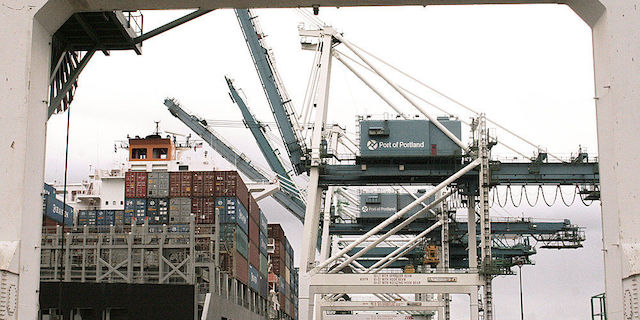Private Treaty February 2025
Pacific Cattle Angus, Sim-Angus, and Simmental range-raised production fall bulls available by PRIVATE TREATY FEBRUARY 2025 Carl Wisse • carl@pacificcattle.com www.pacificcattle.com • 509-539-6850 • Eltopia, WA
Published 5:24 pm Saturday, February 1, 2025

Agriculture and other rural industries are heavily exposed to the policy choices of the federal government, particularly with regard to international trade and immigration, an agricultural banking executive says.
For better or worse these industries will experience significant impacts as the Trump administration and the new Republican-controlled Congress move forward with their policy agendas, said Tom Halverson, president and CEO of CoBank.
“The Trump administration has made clear that it will use tariffs as a bargaining chip in its dealings with other countries, no question about it,” he said during a livestream session from Dairy Forum.
Whether that’s good or a bad depends on one’s political viewpoint and policy priorities, he said.
“I think it’s clear, however, that U.S. agriculture will sustain real collateral damage if we have another round of trade wars with our largest trading partners,” he said.
Those partners are China, Mexico and Canada, and about 75% of all U.S. corn exports and more than 60% of soybean exports go to those three countries. For dairy, it’s 45% of exports, he said.
“So I think we have to be very thoughtful and deliberate when we think about these trading relationships,” he said.
Once the damage is done to long-term relationships with a trading partner, it can be quite difficult, quite time-consuming to reestablish those relationships, Halverson said.
“They are not light switches that can be turned on and off in a moment,” he said.
China imports 100 million metric tons of soybeans a year. About 90% of that comes from the U.S. and Brazil.
U.S. market share was cut by about 50% during the trade war in Trump’s first term and has not fully recovered. In addition, Brazil has significantly ramped up its soybean production and now has 30% more acreage dedicated to soybeans than the U.S., he said.
“That is an indicator of where future market activity is going. Trade wars, therefore have long-term consequences, he said.
“They cause structural damage to relationships, business relationships, and market access, and they can often have unintended impacts that last for years and in some cases for decades,” he said.
He hopes the new administration takes the U.S. farm economy sufficiently into account as it makes decisions about tariffs and trade-related policy.
As for immigration, it’s an extremely sensitive and controversial topic.
The U.S. agricultural economy as it is currently configured depends on immigrant labor to varying degrees, and about 40% of hired agricultural workers are undocumented, according to USDA.
“It is too early to tell what the exact ramifications will be for agriculture from the crackdown on illegal immigration that has currently begun. However, it would be very reasonable … to expect labor costs to go up across much of the agricultural value chain, including for producers and for processors,” he said.
On a final note, USDA spent almost $300 billion in direct payments to producers in 2017 and 2018 in the last trade war. But producers shouldn’t count on that assistance this time around.
The federal government’s financial condition is weak and it is deteriorating rapidly, thanks to extremely high and ongoing persistent budget deficits.
“Anything that looks or feels like a subsidy … will be harder to defend in a future that is certain to be more fiscally constrained in the next few years than it has been at any time in our lifetime,” Halverson said.